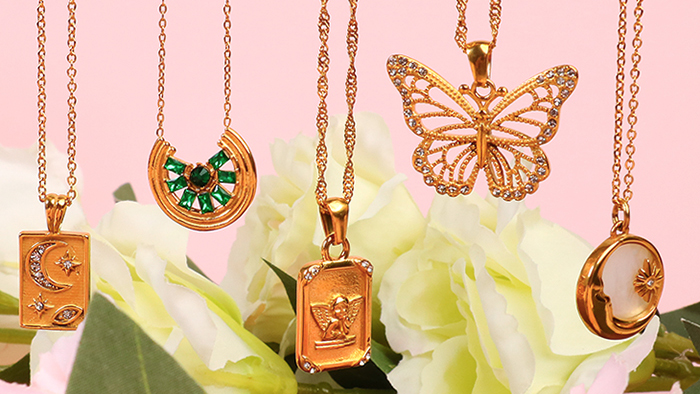The difference of the stainless steel jewelry making supplies and the 316 stainless steel jewelry
The art of jewelry making has evolved, embracing a diverse array of materials and techniques to create pieces that captivate and endure. In this essay, we delve into the intricate world of stainless steel jewelry making supplies, exploring the essential components that bring creativity to life, and we uncover the distinctive qualities that make 316 stainless steel jewelry a sought-after choice in crafting enduring and elegant jewelry.
Stainless Steel Jewelry Making Supplies:

Behind the scenes of every beautifully crafted piece of stainless steel jewelry lies a world of supplies and tools carefully selected by artisans to bring their visions to life. Stainless steel, known for its durability and versatility, serves as the foundation for these supplies, creating a canvas upon which creativity can flourish.
One of the essential elements in stainless steel jewelry making supplies is the raw material itself—stainless steel wire. This wire comes in various gauges, allowing artisans to choose the thickness that suits their design. Its malleability enables intricate and detailed designs, providing a versatile medium for crafting everything from delicate filigree earrings to bold statement necklaces.
In addition to wire, stainless steel findings, such as clasps, jump rings, and earring hooks, play a crucial role in the construction of jewelry pieces. These small but vital components contribute to the functionality and aesthetics of the final product. Stainless steel findings are favored not only for their strength and resistance to corrosion but also for their ability to seamlessly complement the overall design.
Stainless steel jewelry making supplies also encompass tools like pliers, cutters, and mandrels, each serving a specific purpose in the creation process. Pliers are used for bending and shaping wire, while cutters ensure precision in trimming materials. Mandrels, often made from stainless steel themselves, aid in shaping rings and other circular components. The synergy between these tools and stainless steel materials enables artisans to transform their visions into tangible and enduring works of art.
Among the various grades of stainless steel, 316 stainless steel stands out as a favored choice in the realm of jewelry making. Known for its exceptional corrosion resistance, 316 stainless steel is a high-quality alloy that contains chromium, nickel, and molybdenum. This combination not only enhances its resistance to corrosion, making it suitable for prolonged wear, but also contributes to its lustrous and polished appearance.
The allure of 316 stainless steel in jewelry making lies in its ability to strike a harmonious balance between durability and aesthetic appeal. Jewelry crafted from 316 stainless steel exhibits a timeless elegance that can rival more traditional precious metals. Its resistance to tarnish and discoloration ensures that the brilliance of the metal remains intact, providing wearers with a lasting and low-maintenance option.
In addition to its aesthetic qualities, 316 stainless steel is known for its hypoallergenic properties. This makes it a suitable choice for individuals with sensitive skin, ensuring that the joy of wearing jewelry is not compromised by skin irritations. The peace of mind that comes with knowing that one's jewelry is not only beautiful but also safe for daily wear adds to the allure of 316 stainless steel in the world of jewelry.




